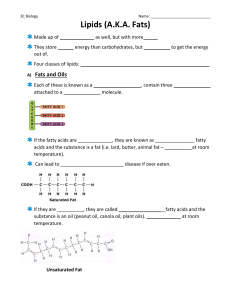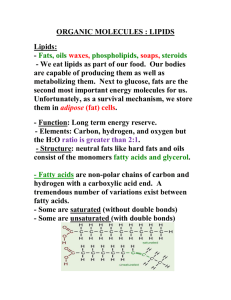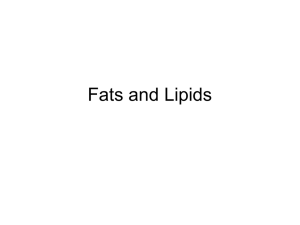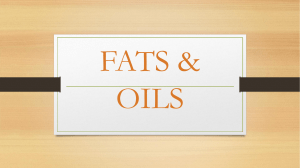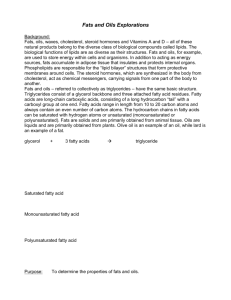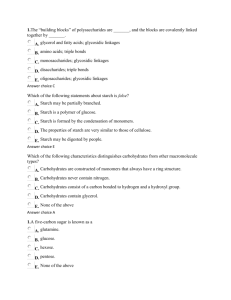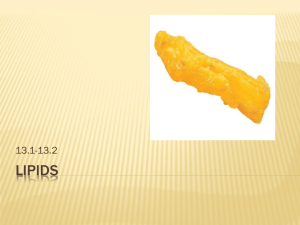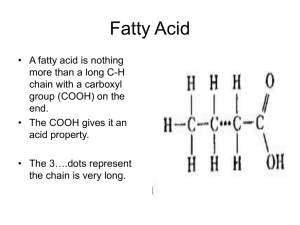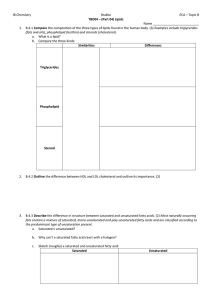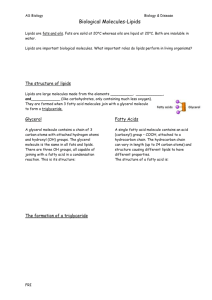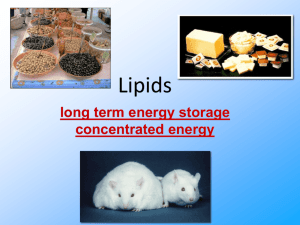Lipids - Grade 9
advertisement
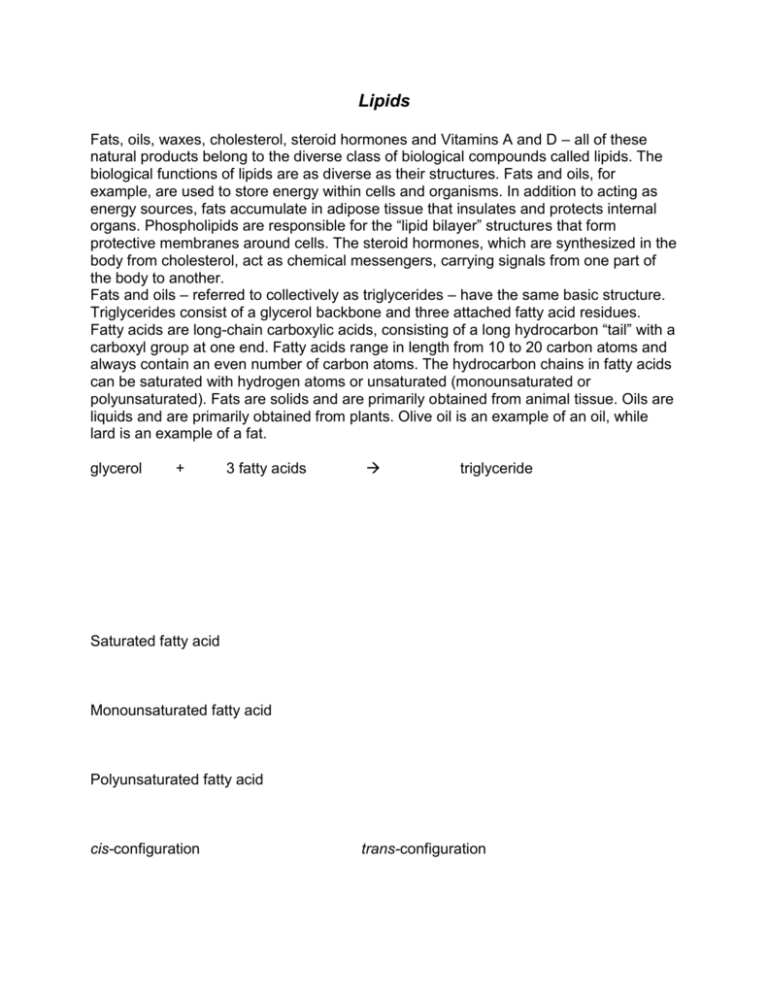
Lipids Fats, oils, waxes, cholesterol, steroid hormones and Vitamins A and D – all of these natural products belong to the diverse class of biological compounds called lipids. The biological functions of lipids are as diverse as their structures. Fats and oils, for example, are used to store energy within cells and organisms. In addition to acting as energy sources, fats accumulate in adipose tissue that insulates and protects internal organs. Phospholipids are responsible for the “lipid bilayer” structures that form protective membranes around cells. The steroid hormones, which are synthesized in the body from cholesterol, act as chemical messengers, carrying signals from one part of the body to another. Fats and oils – referred to collectively as triglycerides – have the same basic structure. Triglycerides consist of a glycerol backbone and three attached fatty acid residues. Fatty acids are long-chain carboxylic acids, consisting of a long hydrocarbon “tail” with a carboxyl group at one end. Fatty acids range in length from 10 to 20 carbon atoms and always contain an even number of carbon atoms. The hydrocarbon chains in fatty acids can be saturated with hydrogen atoms or unsaturated (monounsaturated or polyunsaturated). Fats are solids and are primarily obtained from animal tissue. Oils are liquids and are primarily obtained from plants. Olive oil is an example of an oil, while lard is an example of a fat. glycerol + 3 fatty acids triglyceride Saturated fatty acid Monounsaturated fatty acid Polyunsaturated fatty acid cis-configuration trans-configuration
